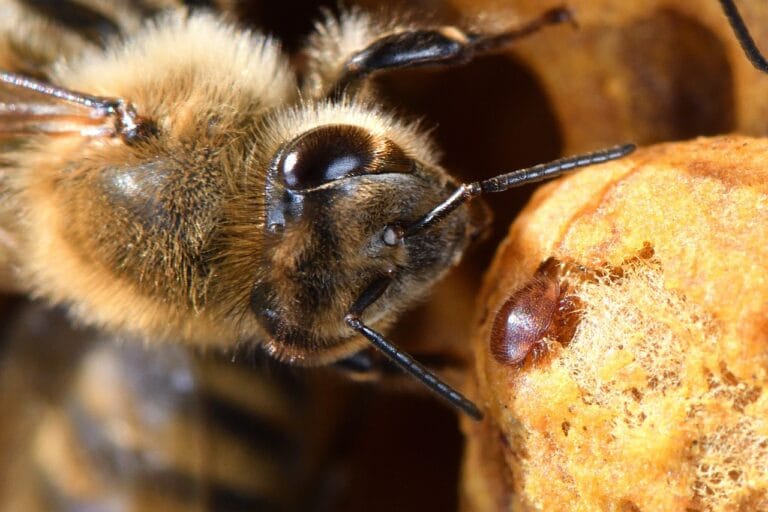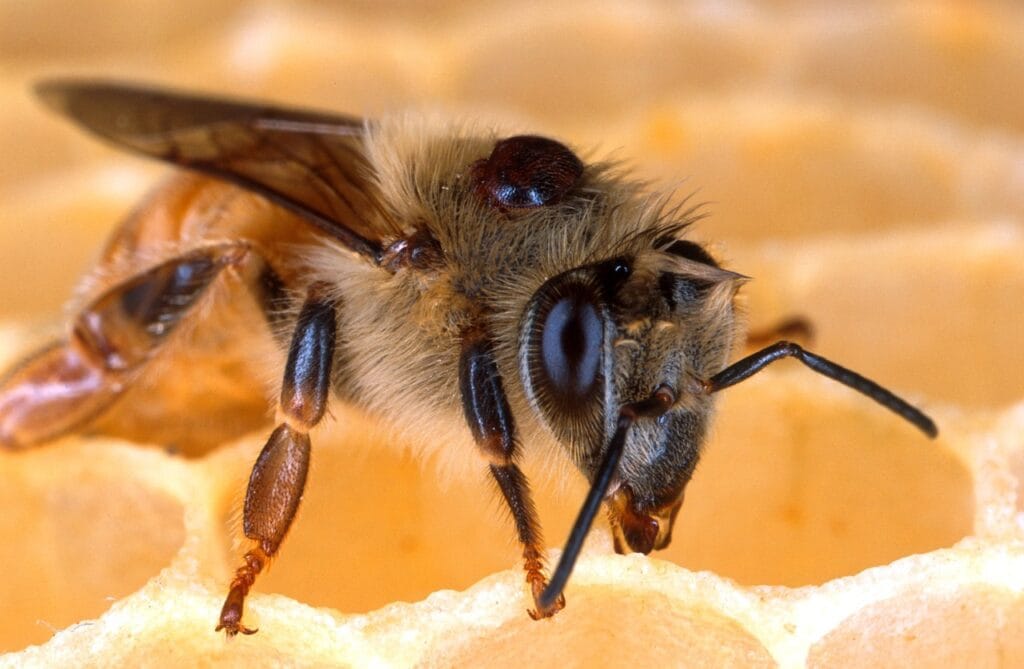Here’s how to manage Varroa Mites in your Hive
Effective management of Varroa mites in bee hives relies on a strategy combining monitoring, cultural controls, mechanical practices, and judicious use of chemical treatments. Integrated Pest Management (IPM) is considered best practice for keeping mite populations below harmful levels[1][2].
1. Monitoring:
- Regularly monitor mite levels using methods such as the sugar shake, alcohol wash, or sticky boards, especially before and after treatments[3][2].
- Take action when mites exceed the threshold of 2–3 mites per 100 adult bees[2].
2. Cultural Controls:
- Select mite-resistant bee stock, such as Russian bees or Varroa Sensitive Hygiene (VSH) lines, which have shown to reduce mite reproduction[1].
- Consider creating a brood break by caging or removing the queen for about 3 weeks, forcing mites onto adult bees and interrupting their reproduction cycle[1].
- Use small-cell comb; although evidence is mixed regarding efficacy, it does not harm bees[1].
3. Mechanical/Physical Practices:
- Install screened bottom boards to allow some mites to fall out of the hive[1][2].
- Employ drone brood removal by providing comb for drone brood, then removing and freezing it before drones emerge, eliminating many mites (timed in 3-week cycles)[1][4].
4. Chemical and “Soft” Treatments:
- Organic acids:
- Essential oils and plant-based products:
- Synthetic chemicals:
- Amitraz (Apivar): Highly effective but may develop resistance; do not use when honey supers are present[1][2].
- Rotate treatments annually to slow the development of resistant mite populations[4].
5. Other Recommendations:
- Avoid unregistered or experimental chemicals to prevent contamination or colony damage[4].
- Sterilizing equipment may help reduce transmission but does not control mite populations within live hives[7].
- Isolating colonies (over 2–3 miles apart) can reduce reinfestation risk, though this may not be practical for most hobbyists[8].
Caveats and Limitations:
- The efficacy of individual strategies varies based on environment, colony strength, time of year, and level of mite infestation.
- No single method is sufficient; a combination of practices is recommended.
- Always follow label instructions for any miticide or treatment product, including necessary personal protective equipment and timing to avoid honey contamination[4].
- Mite populations can rebound or re-enter hives due to drifting and robbing, so continued vigilance is necessary after treatment[8].
Summary
The Honey Bee Health Coalition and university extension programs offer decision tools and detailed guides to help choose and implement a management plan tailored to your local context and needs[3][2].
⁂
- https://extension.psu.edu/methods-to-control-varroa-mites-an-integrated-pest-management-approach
- https://honeybeehealthcoalition.org/wp-content/uploads/2022/08/HBHC-Guide_Varroa-Mgmt_8thEd-082422.pdf
- https://honeybeehealthcoalition.org/resources/varroa-management/
- http://extension.msstate.edu/publications/managing-varroa-mites-honey-bee-colonies
- https://www.perfectbee.com/a-new-beekeepers-journal/treatments-varroa-mites
- https://www.reddit.com/r/Beekeeping/comments/y1g5am/what_is_the_best_beginner_friendly_option_for/
- https://forum.honeyflow.com/t/sterilising-equipment-varroa-mite/33853
- https://beelab.umn.edu/varroa-mites



